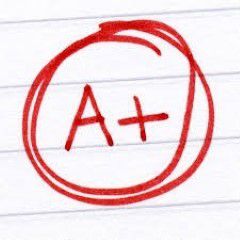CONTINUOUS PROBABILITY DISTRIBUTIONS Complete Solution
CONTINUOUS PROBABILITY DISTRIBUTIONS
- If X is a continuous probability distribution, why doesn’t it matter whether you determine Pr(X < 5.1) or Pr(X ≤ 5.1)?
- “f(7) = 3, so I know that f is not a pdf.” Evaluate this claim.
- “F(7) = -.2, so I know that F is not a cdf.” Evaluate this claim.
- Express the pdf f(b) in terms of the cdf F(x).
- Express the pdf f(b) in terms of Pr(X ≤ x).
- Express the pdf f(b) in terms of Pr(y < X ≤ x).
- Express the cdf F(b) in terms of the pdf f(x).
- Express the cdf F(b) in terms of Pr(X ≤ x).
- Express the cdf F(b) in terms of Pr(y < X ≤ x).
- Express Pr(X ≤ b) in terms of the pdf f(x).
- Express Pr(X ≤ b) in terms of the cdf F(x).
- Express Pr(X ≤ b) in terms of Pr(X > x).
- Express Pr(X ≤ b) in terms of Pr(y < X ≤ x).
- Express Pr(a < X ≤ b) in terms of the pdf f(x).
- Express Pr(a < X ≤ b) in terms of the cdf F(x).
- Express Pr(a < X ≤ b) in terms of Pr(X ≤ x).
- Suppose f and g are pdfs, and that p is some fixed number between 0 and 1. Show that h is a pdf, where h(x) = pf(x) + (1-p)g(x).
- Suppose E[X] = m, and Var[X] = σ2. Calculate the mean of ZX.
- Suppose E[X] = m, and Var[X] = σ2. Calculate the standard deviation of ZX.
- Suppose W = X/σ (where σ is the standard deviation of X). Calculate the standard deviation of W.
- Suppose W = (X – μ) (where μ is the mean of X). Calculate E[W].
- Suppose that Y = a + bX (b > 0). Calculate to show that the standardization of Y is the standardization of X.
- Use the linearity of expectations to prove that Var[X] = E[X2] – E[X]2.
- Assume that f(x) = cx4 for 0 < x ≤ 1 (and is 0 otherwise) is a pdf. What is c? Show this by showing that .
- Assume that f(x) = (.25)x4 for 0 < x ≤ 1 (and is 0 otherwise) is a pdf. What is Pr[X ≤ .3]?
- Assume that f(x) = (.25)x4 for 0 < x ≤ 1 (and is 0 otherwise) is a pdf. What is Pr[X > .5]?
- Assume that f(x) = (.25)x4 for 0 < x ≤ 1 (and is 0 otherwise) is a pdf. What is Pr[.3 < X ≤ .5]?
- Assume that f(x) = (.25)x4 for 0 < x ≤ 1 (and is 0 otherwise) is a pdf. What is Pr[X > .5 | X > .3]?
- Assume that f(x) = (.25)x4 for 0 < x ≤ 1 (and is 0 otherwise) is a pdf. What is Pr[.4 < X ≤ .5 | .3 < X ≤ .7]?
UNIFORM DISTRIBUTION
- Draw the and label (both axes of) the graphs of the pdf (together, on one set of axes) of Unif(0,1) and Unif(-1, 2).
- Draw and label (both axes of) the graphs of the cdf (together, on one set of axes) of Unif(0,1) and Unif(-1, 2).
- What is the pdf for the Uniform distribution on (a, b)?
- What is the cdf for the Uniform distribution on (a, b) (do not express this using integrals)?
- Suppose X ~ Unif(0, 1). What is Pr[X ≤ .3]?
- Suppose X ~ Unif(0, 1). What is Pr[X > .5]?
- Suppose X ~ Unif(0, 1). What is Pr[.3 < X ≤ .5]?
- Suppose X ~ Unif(0, 1). What is Pr[X > .5 | X > .3]?
- Suppose X ~ Unif(0, 1). What is Pr[.3 < X ≤ .5 | .2 < X ≤ .8]?
- Suppose X ~ Unif(-10, 15). What is Pr[X ≤ 0]?
- Suppose X ~ Unif(-10, 15). What is Pr[X > 2]?
- Suppose X ~ Unif(-10, 15). What is Pr[3 < X ≤ 8]?
- Suppose X ~ Unif(-10, 15). What is Pr[X > 10 | X > 5]?
- Suppose X ~ Unif(-10, 15). What is Pr[0 < X ≤ 5 | 0 < X ≤ 10]?
- Starting from the definition of E[X] and the pdf of a uniform distribution, calculate that E[X] = , where X ~ Unif(a, b).
- If X~Unif(2, 7), what is the mean of X?
- If X~Unif(2, 7), what is the variance of X?
- If X ~Unif(2, 7), what is the standard deviation of X?
- A piece of string of length 3 is cut completely at random, into a first piece and a second piece. What is the probability that the first piece will have length at least 2?
- You have developed a crush on that Special Someone (SS). SS regularly uses the stair-stepper machine at the ARC, and always for exactly 60 minutes, but not always at the same time each day. You hope to make a connection to SS by striking up a conversation while you use a stair machine next to SS. One day you enter the ARC, and SS is there. You have no clue how much is left of SS's workout. At that point in time, what is the expected amount of time left in SS's workout? (Represent the distribution of times into SS's workout at which you might have entered as a random variable, and calculate your answer.) In this scenario, what is the variance of the distribution of the amount of time left in SS's workout?
- As an estimate of likely amounts of time you have with SS, you decide to take the mean, plus or minus 1.5 sds. What are the upper and lower bounds of this interval (in minutes). If there is a 95% chance that you will have at least X many minutes with SS. What is X? If there is a 5% chance that you will have no more than Y many minutes with SS. What is Y?
- X ~ Unif(a, b). The (positive) density of the pdf of X is .714, and a = -3.1. What is b?
- X ~ Unif(a, b). The (positive) density of the pdf of X is .714, and b = -1.7. What is a?
- X ~ Unif(c, d), and Y ~ Unif(g, h). Y = a + bX; what are a and b? [Comment: This is a very simple example of a general “location and scale” transformation, which is very common in statistics.]
- X ~ Unif(a, b), and Y = (X – a)/(b – a). Show that Y ~ Unif(0, 1); i.e. Pr[Y ≤ c] = c, for 0 ≤ c ≤ 1.
- U ~ Unif(0, 1), and Y = a + (b – a)U, where a < b. Show that Y ~ Unif(a, b).
- U ~ Unif(0, 1). ZU ~ Unif(a, b); what are a and b?
- X ~ Unif(-5, 5). ZX ~ Unif(a, b); what are a and b?
TRANSFORMATION GROUP QUESTIONS Let G be the set of all functions of the form g(x) = a + bx, for any a and any b > 0. The next series of questions show that G is a mathematical “group”, and outline a few properties. (This is an important idea for some forms of statistical inference.) For any two functions g and h in G, we define gh so that gh(x) = g(h(x)).
- For g(x) = a + bx, and h = c + dx, show that gh is in G. That is, show that gh(x) = α + βx, and express the values of α and β in terms of a, b, c, and d.
- Show that if f, g, and h are in G, then (fg)h(x) = f(gh)x.
- Show that there exists some function i in G such that ig(x) = gi(x) = g(x), for all g in G. If i(x) = a + bx, then what are the values of a and b?
- Show that for any g in G, there is a g’ in G such that gg’(x) = g’g(x) = i(x).
- Give an example of a g and an h in G such that gh(x) ≠ hg(x).
THE NORMAL (AKA GAUSSIAN) DISTRIBUTION
- For Z~N(0,1), determine Pr[Z ≤ 1.8].
- For Z~N(0,1), determine Pr[Z > 2.2].
- For Z~N(0,1), determine Pr[-.2 < Z ≤ .8].
- For Z~N(0,1), determine Pr[-.2 < Z < .8 | –1.5 < Z ≤ 1.5].
- For X ~ N(25, 18), determine Pr[X ≤ 31].
- For X ~ N(25, 18), determine Pr[X > 22].
- For X ~ N(25, 18), determine Pr[20 < X ≤ 30].
- For X~N(25, 18), determine Pr[27 < X ≤ 30 | 20 < X ≤ 31].
- Suppose Z1,…, Z7 are i.i.d., with the distribution N(0, 1). What is the probability that they all yield values less than 1.8?
- Suppose Z1,…, Z7 are i.i.d., with the distribution N(0, 1). What is the probability that they all yield values greater than 2.2?
- Suppose Z1,…, Z7 are i.i.d., with the distribution N(0, 1). What is the probability that they all yield values between -.2 and .8?
- Draw and label the graphs of the pdf (together, on one set of axes) of N(0,1) and N(-1, 2). Your graphs should display how the different parameters of the two distributions affect the pdfs.
- Draw and label the graphs of the cdf (together, on one set of axes) of N(0,1) and N(-1, 2). Your graphs should display how the different parameters of the two distributions affect the cdfs.
- What is the mean of X if X ~ N(m, s2)?
- What is the variance of X if X ~ N(m, s2)?
- What is the standard deviation of X if X ~ N(m, s2)?
- What is the (standardized) skew of the normal distribution?
- What is the (standardized) kurtosis of the normal distribution (or: if your answer to this is 0, then what constant number is subtracted from the formula to yield 0)?
- For N(m, s2) (with pdf f), show that the largest value of f (aka the mode) is equal to .400σ-1.
- For N(m, s2) (with pdf f) , show that for any number x other than μ f(x) < f(μ). [Hint: write x as: x = μ + c, for some c ≠ 0]
- For N(40, 18) (with pdf f), calculate the largest value of its pdf (aka the mode).
- For N(m, s2) (with pdf f), f(μ) = 7.5. What is σ?
- If X ~ N(0, 1), then what is the distribution of Y = a + bX (b ≠ 0)?
- If X ~ N(m, s2), how would you transform it so that it is distributed as N(0, 1)?
- If X ~ N(0, 1), then what is the distribution of Y = 2 + 3X?
- If X ~ N(6, 4), how would you transform it so that it is distributed as N(0, 1)?
- If X ~ N(6, 4), then what is the distribution of Y = 2 + 3X?
- For what values is the pdf of N(6, 4) greater than 0?
- Calculate the value of in terms of the mean m of Xi, (i.e., like we did in class).
- Calculate the variance of in terms of the variance s2 of Xi (i.e., like we did in class).
- If {X1,…, X37} is a random sample from N(100, 25), then what is the variance of ? And what is the standard deviation of ?
- Give the limit formula in the Central Limit Theorem as a limit formula of a sum of standardized random variables (scaled by n-1/2). In this formula, what random variables are being standardized?
- Give the limit formula in the Central Limit Theorem as a limit formula of a standardization of a single random variable. In this formulation, what random variable is being standardized?
- Show that the two forms of the Central Limit Theorem are equivalent by calculating that:
- The host probability distribution (e.g., wages of individuals) whose mean you wish to estimate is not normally distributed, and yet your analysis of the mean of a random sample involves the normal distribution. Explain why.
- If = 10, m = 4, s2= 5, and n = 11, what is the z-score for ?
- Many test scores are (approximately) normally distributed. Your professor reports that the midterm average was a 78, and that the standard deviation was 8. You got an 88 on the midterm. Approximately what percentile does that put you in? (I.e., what percentage of the students did you score higher than?) What is the approximate range of scores for the middle 50% of the scores? What is the approximate range of scores for the top 10% of the scores? What is the approximate range of scores for the bottom 10% of the scores?
- Test scores were approximately normally distributed with a mean of 76.5 and standard deviation of 9.2. An A is a score of 93.5 or higher. What percentage of students got As? A , B is a score between 80 and 90. What percentage of students got Bs? To pass, you need a score of at least 60. What percentage of students passed?
Note: A “p interval” refers to an interval (a, b) such that Pr[a ≤ X < b] = p. E.g., a 50% interval is an interval (a, b) such that there is a 50% chance that X yields a value between a and b.
- For Z~N(0,1), can there be a 50% interval (a, b) where a = 1? If so, what is it; if not, why not?
- For Z~N(0,1), can there be a 50% interval (a, b) where b = -1? If so, what is it; if not, why not?
- The fiber quality from your company’s cloth supplier varies according to the distribution N(630, 222). Your division can only accept cloth bundles at a quality level of 640 or higher. However, the top 13% (in terms of quality) of cloth bundles are automatically routed to another division. What is the range of cloth quality in your division? What is the length of this range? What is the probability that a randomly selected bundle of cloth can be used in your division.
- Your lab is analyzing a certain species of rodent. Prior research indicates that the species’ length in feet is normally distributed, with a mean of .92 and a standard deviation of .18. What is the distribution of this species’ length in inches?
- Your lab is analyzing a certain species of rodent. Prior research indicates that the species’ length in feet is normally distributed, with a mean of .85 and a standard deviation of .19. What is the probability that a given rodent will be between 8 and 10 inches long? And what is the probability that a given rodent will be more than 13 inches long?
- Your lab is analyzing a certain species of rodent. Prior research indicates that the species’ length in feet is normally distributed, with a mean of .85 and a standard deviation of .19. You have just received 5 (independently selected) rodents, and you need them to all be between 9 and 12 inches long. What is the probability of this occurring?
- X ~ N(80, 42). You are participating in a gamble G: If X ≤ x, you get $3; if X > x, you lose $5. E[G] = 0. What is x?
- X ~ N(80, 42). You are participating in a gamble G: If X ≤ x, you get $3; if X > x, you lose $5. E[G] = 0. What is Var[G]?
- X ~ N(80, 42). You are participating in a gamble G: If X ≤ x, you get $3; if X > x, you lose $5. x = 83. What is E[G] ?
- X ~ N(80, 42). You are participating in a gamble G: If X ≤ x, you get $3; if X > , you lose $5. x = 83. What is Var[G] ?
- X is distributed as either N(80, 42) (with cdf F) or as N(87, 52) (with cdf G). You obtain a value of X, x = 83, and you wish to use it as part of a test to determine which distribution it came from. What are the two relevant “p values” (1 – F(x)) and G(x)?
CONTINUOUS PROBABILITY DISTRIBUTIONS Complete Solution
This Tutorial is rated A+ p...






Tutormaster
Senior JournalistSell Your Solution Report Solution Support Center
Online Users
-
 Tutormaster
Today
Tutormaster
Today



A+ - Thank you!
Thanks for the positive feedback!